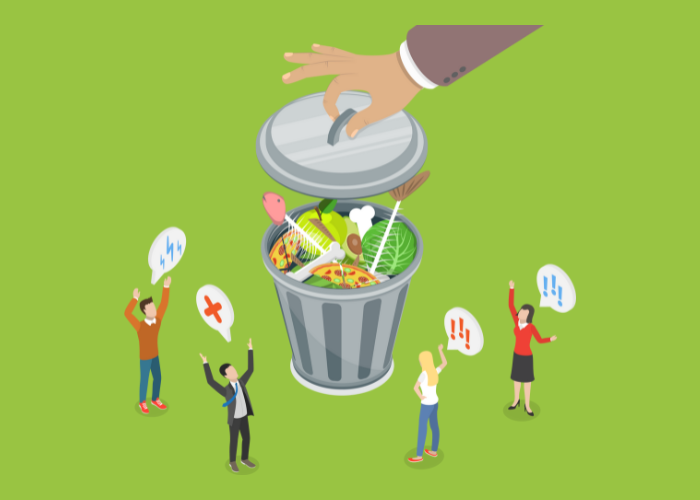Tackling food waste for a sustainable futureBY LUCREZIA CARMIGNANI
- 29 September 2023
- Posted by: Competere
- Categories: highlights, News, Sustainable Nutrition

September 29th marks the International Day of Awareness of Food Loss and Waste, aimed to advance one of the Sustainable Development Goals outlined in the Agenda 2030: cutting global per capita food waste in half.
UNDERSTANDING FOOD WASTE
But what exactly do we mean when we talk about food waste? The term encompasses all those products that are discarded, thrown away, or disposed of due to economic considerations, aesthetic concerns, or simply because they are nearing their expiration date, even though they are still perfectly edible. According to the FAO, a staggering 1.3 billion tons of food go to waste every year. This translates to more than a third of the world’s total food production.
In Italy, in 2022, each person discarded 75 grams of food per day – that’s just over 27 kilograms annually. Southern regions and childless households displayed even higher numbers – 8% and 38% above the national average, respectively. In monetary terms, this amounts to a staggering €15.8 billion loss. Of this, €6.5 billion is wasted in households, while more than €9 billion is lost throughout the supply chain, from farms to homes. Nevertheless, over 2.6 million people struggle to access regular meals, and 9.4% of the population lives in poverty.
It’s clear that we are facing one of the most profound paradoxes within the food production system. Addressing this issue could not only ensure food security for all but also significantly reduce greenhouse gas emissions, for which waste is responsible for a substantial 10%. Furthermore, it would alleviate the strain on our natural resources, particularly water and land consumption.
THE ROOTS OF FOOD WASTE
Food waste occurs across the entire product lifecycle: from production and transportation to distribution and consumption. While in developing countries, losses primarily arise during the first two phases, in developed nations, it is more prevalent in the later stages.
Less developed countries often suffer crop losses due to adverse weather and diseases, exacerbated by climate change. The lack of hermetically sealed packaging and inadequate infrastructures – such as road networks and transportation means – accelerate food degradation.
Conversely, in more advanced societies, perfectly edible products like fruits and vegetables are often discarded merely due to imperfections such blemishes, bruises, or non-standard shapes. Additionally, the practice of not prominently displaying products close to their expiration date on store shelves contributes to these wasteful practices. Another significant factor is the issue of unsold goods, which occurs when the supply of products exceeds consumer demand.
At the household level, excessive food purchases and overzealous food preparation often play a role. People frequently buy and cook more food than necessary, resulting in the disposal of substantial quantities of groceries either due to spoilage before consumption or leftovers on the table.
WHAT ARE THE SOLUTIONS?
Three distinct yet complementary solutions emerge: education, recycling, and technology.
Without the promotion of accurate information, consumers cannot make informed and responsible choices. Therefore, food education is vital across all ages group, not limited to the youngest. To avoid unnecessary food losses, individuals must be able to discern food quality and understand the principles of proper nutrition.
Recycling constitutes the second critical aspect in the fight against waste, with composting being a noteworthy practice. Food scraps can be repurposed to produce natural fertilizers. Moreover, there are many programs aimed to collect surplus food from supermarkets or restaurants for redistribution to those in need or charitable organizations.
Lastly, technology emerges as a valuable ally, applicable from production to the household. For instance, advanced materials in transportation can extend the shelf life of food. Smart refrigeration systems in retail settings allow for remote temperature monitoring. Nevertheless, it is essential to align technology with a conscious approach: buy and eat responsibly.

